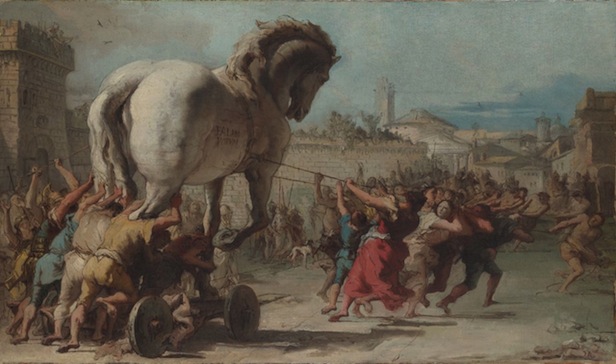The Trojan horse is a classic tale set during the Trojan war. In the story the Greeks build a large wooden horse and hide inside it, the Trojans accept the horse as a victory trophy and pull it into the city. When night falls the Greeks climbs out of the horse and open the gates of the city. The remaining Greek army pour in and destroy the city of Troy, ending the war.
But how much truth is in this tale? The main source for the story is from the Aeneid of Virgil, a Latin epic poem, and Homer’s Odyssey. As a result the entire Trojan War is full of myth, and it is difficult to ascertain how much of it actually happened. However, modern historians have speculated the origin of the Trojan horse myth. The horse may instead have been a battering ram which resembled a horse, or even a siege machine (which were often given animal names.) There is also a popular belief that the horse represents an earthquake which weakened the walls surrounding Troy. This is backed up by the fact that Poseidon was seen as the god of earthquakes, and also the god of horses. Finally, it’s also been argued that the gift was instead a boat carrying a peace envoy as the terms used to describe putting the men in the horse are similar to those used to describe men embarking on a ship. Ultimately it’s unlikely that the real truth behind the myth will ever truly be ascertained and it should be treated as a classic tale, rather than a historical event.

